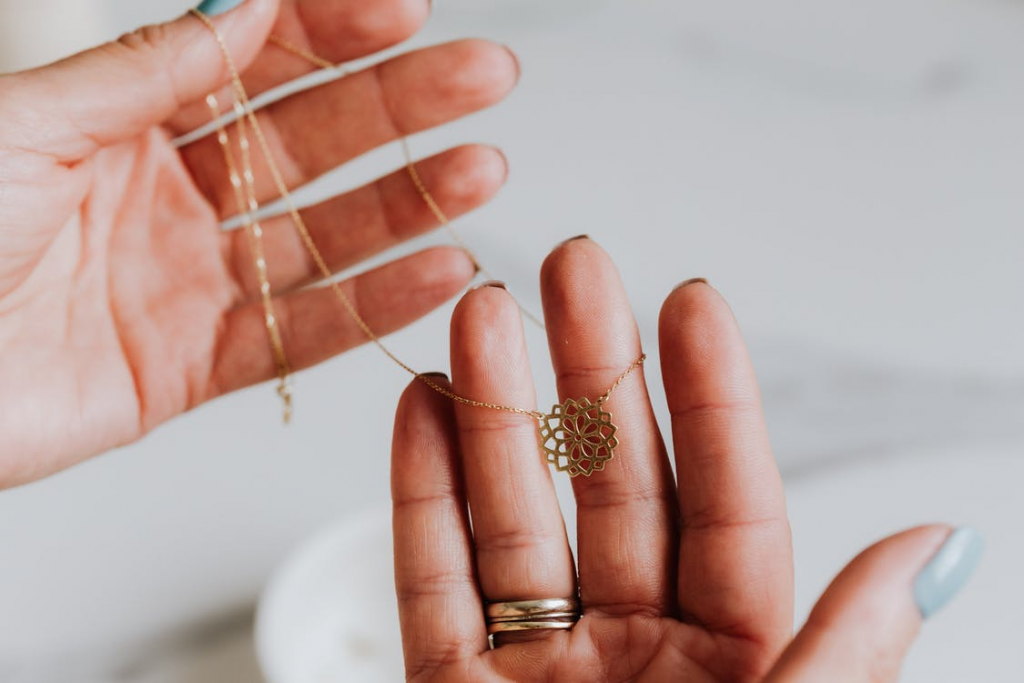Everything to Know About 10K,14K,18K, and 24K Gold Jewelry
When you choose jewelry for yourself or someone you love, there are different gold types for you to decide. Many questions confuse the mind of the people searching for jewelry and other gold products online. Such as carats or karats, 14k vs 18k, is solid gold worth it, etc. Here in this guide, we’ll try to move away from one of the common questions by the web users about the karats of gold.
What are Karats?
A karat is a measurement of the purity of gold. The fineness of a piece is the weight of the fine metal about the entire weight of the item, which includes alloyed metals and any impurities.
Gold is measured in karats. A karat is a fractional measure of purity for gold alloys measured in parts per 24 parts. The greatest possible karat is 24 karat (24k) gold, pure gold that has not been combined with any other metals.
Because of its softness and malleability and its inclination to scratch and mark, pure gold is rarely used for jewelry. As a result, it is frequently alloyed with base metals for use in jewelry, resulting in changes in malleability, color, and other properties. The more an alloy is blended with pure gold, the lower the number of karats, and hence the less gold there is.
How to use Karats to measure gold purity
Gold is most commonly blended with silver, zinc, copper, or palladium to produce different karats and colors of gold, such as rose gold or white gold. 24 karat gold, 22 karat gold, 18 karat gold, 14 karat gold, and 10 karat gold are the traditional karats used in gold jewelry.
24K gold
You’ll realize that 24 karat gold is “pure” gold once you comprehend the karat system. You would think that this indicates that 24k gold is the greatest option. Purity, after all, appears to be a positive thing: not only will the artwork be more appealing and sought-after, but it will also come with bragging rights, correct?

Advantages
To begin with, gold is a soft metal. Gold is incredibly flexible and easy to deal with, despite its density, making it a “heavy metal.” In some ways, this makes it a great material for jewelry because it can be easily shaped into any shape
- Softness and malleability are only the beginning. Pure gold has a brilliant sheen to it. You’re probably thinking of a gold alloy when you think of “pure gold.” Pure gold’s natural hue is brighter and more orange than most people imagine. As a result, it often results in unappealing jewelry.
- However, there is one advantage to 24k gold. The resale value of 24k gold is substantially higher. If you want to invest in gold or create a family treasure that will last for many generations, 24k gold may be the best choice.
Disadvantages
Certainly not. While it is the highest karat gold available and gold is a lovely substance, it has several drawbacks.
- It can lead to frailty, scratching, bending, warping, and other damage that can occur when wearing 24k gold jewelry. A piece of jewelry must maintain its shape and appeal for an extended amount of time to be useful.
- 24k gold, on the other hand, is probably the worst choice for an engagement ring or other piece of jewelry; it’s too soft, too dazzling, and too pricey to be worth it.
- Furthermore, pure gold is much more costly. The expense of gold is one of the reasons why jewelers blend it with an alloying metal. A 24k gold ring is usually at least twice as expensive as a 14k gold ring. Thus the price rise isn’t entirely linear.
So, if 24k gold isn’t a possibility, what’s the next best thing?
18K gold
The most common karat used in jewelry is 18k gold, which is also the most sought after. This signifies that 18 of the 24 (3/4) pieces are pure gold, which is a significant percentage.18k gold is 75 percent pure gold, with the remaining 25% made up of a mixture of alloyed metals. The rich, yellow color of 18k gold distinguishes it. Because of its balanced purity, it’s frequently connected with rings, necklaces, and other popular jewelry types.

Advantages
Purchasing 18k gold has numerous advantages. Consider the following scenario:
- Practical purity at its finest level. If you’re looking for something pure, 18k gold is about as lovely as it gets for a useful piece of jewelry. Because 24k gold is unsuitable, 18k gold is the next best option.
- A lovely yellow gleam. Because of its dazzling golden sheen, many people adore the look of 18k gold. As a result, it’s ideal for engagement and wedding rings.
- Allergic responses are minimal. Some alloying metals cause allergic reactions in the wearer; nickel, for example, can cause skin irritation. The risk of skin irritation is nearly non-existent because 18k gold includes just a small amount of alloying metal.
Disadvantages
There are, however, some drawbacks to consider, including:
- Even with some alloys, 18k gold is still relatively easy to damage. It is readily scratched and may distort under some circumstances.
- 18k gold is one of the most expensive grades of gold available due to its purity. This isn’t a viable option if you seek to buy jewelry on a tight budget. An 18k item of jewelry might cost twice as much as a 14k version in some situations.
Usage
Yellow diamonds set in 18k gold ring a ring made of 18-karat gold
14K gold
14k gold isn’t as pure as 18k gold; it consists of 58.3 percent gold and 41.7 percent alloy. Due to its ability to combine the benefits of pure gold and alloying metals, it remains one of the most preferred options for gold jewelry.
14k gold usually keeps the dazzling yellow look associated with traditional gold, albeit it will be less intense than 18k gold, depending on the alloying materials employed. This is a benefit. The vivid yellow color complements certain skin tones.

Advantages
Let’s have a look at some of the benefits:
- Sturdy construction. In comparison to 18k or 24k gold, 14k gold is quite robust. It’s more scratch-resistant, but it can still be destroyed if you’re not careful.
- The color has a rich, gold-like look. Although 14k gold lacks the brilliant luster of 18k gold, it still has a rich, gold touch that may enhance the beauty of any jewelry item.
- Inexpensiveness in comparison to other options. In terms of value, 14k gold is one of the greatest possibilities. It’s cheap, yet it still has a lot of benefits.
Disadvantages
So, what are the drawbacks? Even yet, it’s still more expensive than ten thousand dollars in gold. When comparing 10k gold to 14k gold, 14k gold is still more expensive, making it less suitable for budget shoppers.
Usage
14k gold is used in more than 90% of wedding and engagement rings in the United States.
10K Gold
Let’s take a look at 10k gold. There is 41.7 percent gold in this composition, with 58.3 percent alloying metal. In the United States, this is the least pure choice that is still often used in jewelry. In fact, in most jurisdictions, this is the lowest purity of gold that may be legally marketed as “gold.”

Advantages
There are some significant advantages to 10k gold:
- Total cost-effectiveness of 10k gold. The cheapest kind of gold still widely used in jewelry is 10k gold. This is your best bet if you’re seeking the cheapest choice.
- Extreme tenacity. Most 10k gold rings do not have the same weaknesses as their 18k counterparts because of the significant alloy content. Scratching or warping this type of material is much more difficult.
Disadvantages
- Coloration is light. While some may find the pale tint of 10k gold subtle and appealing, most jewelry connoisseurs despise it.
- Irritation of the skin is more likely. An allergic reaction is more likely with a high alloy level, mainly if the metal includes nickel or zinc.
Usage
- Many types of gold jewelry, such as earrings, are popular in this style, while engagement rings and other high-end items are less frequent. Because of this, some jewelers don’t even offer 10k gold as a choice.
- Although 10k gold has a paler appearance than 14k or 18k gold, this isn’t always bad; some people enjoy the softer, subtler tone.
How to choose the best gold jewelry
Buying gold jewelry is not like buying a pair of jeans and shirt, the value of money is backed by gold. Wherever your step into the world, gold is in demand everywhere with no worries of inflation at all.
In order to let you decide the perfect type of gold that fits best based on your requirement, here’s a little consideration below
Purity level
As we already discussed the types of gold jewelry according to the karat system. 24k is the purest of all whereas 10k is the least of all. Jewelry is usually made with 18k, 14k and 10k gold. This means the purest one is 18k which has the largest value for money.
Nickel allergy
Apart from the karat system, we do have plated, and vermeil gold jewelries too. Within the gold jewelry also, we do have metals like nickel being added with the purpose to strengthen the material. Thus, metals like nickel are a necessary part of jewelry. They won’t leave you behind until and unless you opt for any other alloy metal. People with nickel allergy tend to find jewelry in which nickel is not added at all.
Not all that glitters
You might have heard this phrase at least once in your life, “not all that glitters is gold”. It is true because the increasing demand of gold filled jewelry has made it difficult for people to distinguish between the pure gold jewelry and the filled one.
Where can I buy the best gold jewelry?
Selecting the right type of gold for your jewelry is not an easy task obviously, but with a little effort, you’ll have the confidence to make the right choice that will remind you of your right decision even after years.
At Callie. We have a lot of personalized jewelry products regardless of your age. We have beautiful gold earrings, necklaces, rings, and much more that can be explored here.


































